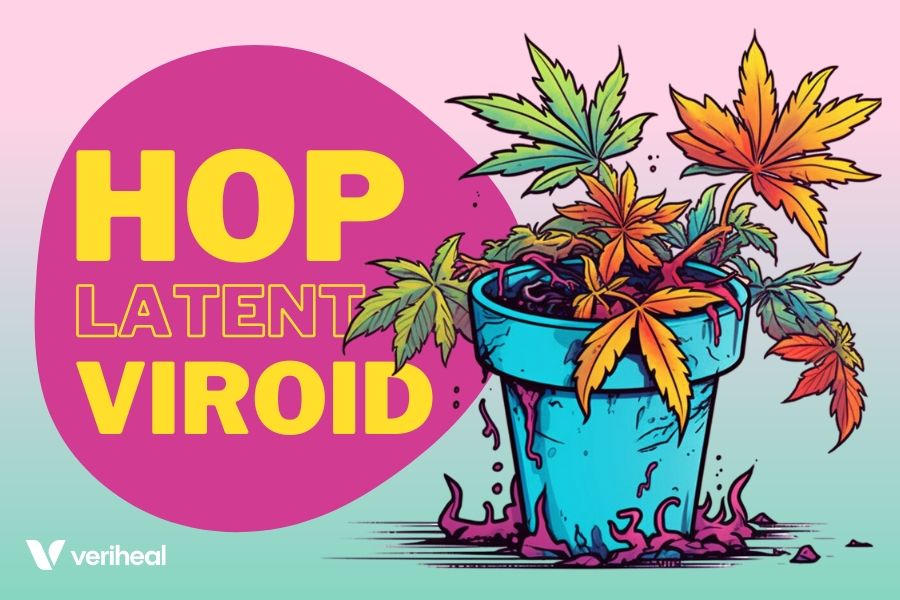The legal cannabis industry has blossomed into a multi-billion-dollar industry. However, there is a new threat that could potentially eat away at future profits and even destroy cannabis cultivation. Cannabis growers already face numerous challenges, such as spider mites, thrips, mold, and mildew. Now, they must also be wary of a new threat called the hop latent viroid (HLV).
In 2018, HLV was discovered in a cannabis cultivation site in California, and it is believed to have spread across North America and possibly worldwide. What initially started as viral and pest problems has now become a genetic issue.
Understanding the Hop Latent Viroid
The hop latent viroid, also known as Dudding Disease, is a single-stranded, circular infectious RNA. It is not a virus, but rather a type of ribonucleic acid (RNA) found in all living cells. RNA acts as a messenger, carrying instructions from DNA to control protein synthesis.
HLV can cause significant damage to cannabis plants, resulting in billions of dollars in losses for cultivators. The effects of HLV are devastating and irreversible. Once a crop is infected, there is no way to salvage it. The only solution is to completely eradicate the infected plants and start over.
The Devastating Effects of HLV
HLV can strike at any stage of a cannabis plant’s growth. When a plant is infected during the vegetative stage, it will exhibit symptoms such as yellow leaves, abnormal branching, frail stems, and stunted growth. Plants affected during the flowering stage will have smaller buds, reduced terpene content, and up to a 50% decrease in cannabinoid production.
Professor Zamir Punja from Simon Frazier University explained that there is no way to combat HLV once it infects a plant. Environmental controls and adjustments are ineffective. Infected plants must be completely removed, and all equipment and growing areas must be thoroughly cleaned to prevent further spread.
How Does HLV Spread?
HLV is not spread through contamination but is instead a genetic issue inherited by cannabis plants. Poor cleanliness practices in grow facilities are the main contributors to the spread of HLV. Trim tools and human hands are believed to be the primary sources of transmission.
HLV can be spread rapidly through plant roots during grafting or vegetative propagation. It also has a higher impact on hydroponic growth due to its ability to move through water and infect the root system. Researchers suggest that HLV is unavoidable, as it can be found in hydroponic water, soil, and even seeds. It can also be spread through touch, insects, and airborne transmission.
Detection and Prevention of HLV
There are tissue tests available to detect the presence of HLV, but they may not provide accurate results in the early stages of infection. A third test conducted weeks later may show positive results even if the initial tests were negative.
Bioscience companies have developed methods to clean infected plants using tissue culture and test kits that can detect HLV. Implementing good biosecurity standard operating procedures (SOPs) is crucial in preventing the spread of HLV.
Complete eradication of HLV may only be possible through advanced genetic engineering or selective breeding to develop resistant plants.
Protecting Cannabis Cultivation from HLV
To avoid the devastating effects of HLV, cannabis cultivators must prioritize cleanliness. It is essential to clean tools, wear gloves and protective clothing, and maintain a clean environment. Limiting visitor access and implementing strict visitor protocols, such as wearing protective clothing and minimizing direct contact with plants, can also help prevent the spread of HLV.
Conclusion
HLV poses a significant threat to the cannabis industry, but with the help of bioscience and genetic companies, there are potential solutions on the horizon. By prioritizing cleanliness and implementing strict biosecurity measures, cultivators can reduce the risk of HLV transmission and protect their crops.


